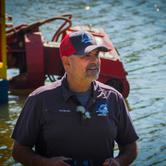5 Tips to Help Prevent Toxic Algae Blooms

Ponds and lakes provide tremendous value to the communities they reside in. If properly maintained, they can help raise property values and provide entertainment and recreational opportunities for the local community. Yet many people are unaware they can contain a hidden danger: toxic algae. A natural process occurs as the sun starts to beat down on ponds and lakes during the warm summer months. The nutrients from the sun begin to feed and develop large algae blooms. While most of these blooms are harmless, Harmful Algae Blooms (HABs) can and do occur. These toxic blooms can seriously harm or kill animals, pets, and even people! Due to increased nutrient runoff, they are becoming increasingly prevalent as the years go by. Livestock farms, industrial parks, pet waste, and even agricultural facilities all contribute to the growth of HABs in ponds and lakes across America. We will give you five tips on mitigating and controlling these potentially lethal algae outbreaks.
What Exactly Are Harmful Algae Blooms?
HABs occur when nutrients such as farm runoff, pet waste, or ample sun come into contact with a stagnant pond or lake. The top of the water usually shows a blue-green discoloration, indicating their presence. They’re not algae but rather a primitive single-celled bacterium called cyanobacteria. When the conditions are right, they form a bloom and explode in population. They usually occur in mid to late summer. These cyanobacteria can produce liver toxins, neurotoxins, and respiratory or cardiac problems. When you encounter a pond or lake that has foam or scum on top of the water or the water looks discolored, it’s best to avoid contact with the water altogether. If you let your dog swim in the pond during a HAB, it could quickly be killed or harmed.
How do I tell if My Lake or Pond has a Harmful Algae Bloom?
Not all blooms are toxic. The only way to know is to have a water sample taken and sent to a laboratory for analysis. Some visual cues that might indicate a HAB are:
- Blue-green water
- Pink or red scum on top of the water
- Foam on top of the water
- Water that looks like pea soup (green)
- Oily or soupy scum
Regular Water Tests
If animals and humans use it, remember to regularly test the water in your private, HOA, or golf course pond. Water managers or property owners usually won’t check the water quality until a suspected bloom appears. By this time, it’s too late to do anything proactive. Coming up with an HAB mitigation plan and sticking to it is the best way to prevent it from occurring in the first place. Monthly water testing can warn you if the conditions suit a HAB.
Limit Nutrients
Nutrients that can encourage and feed a harmful algae bloom are washed into ponds and lakes during rainstorms. Anything in or on the ground can easily be washed down into the water. The bottom of the water can also contain dead leaves and other organic matter that will not decompose due to the lack of oxygen. This organic matter is another source of nutrients that can encourage a harmful algae bloom. You could mitigate the surface nutrients completely, but the dirty organic stuff at the bottom can easily contribute to a harmful algae bloom. The best way to eliminate it is to dredge the pond or lake using an experienced underwater dredging company like American Underwater Services.
Aeration System
A floating fountain or a submerged aerator can help circulate water and prevent conditions that would encourage HAB. However, aerators alone cannot prevent harmful algae from occurring (despite what the manufacturers claim). You must also actively limit the number of nutrients in the body of water.
Create a Buffer
A natural and aesthetically pleasing way to help mitigate harmful algae blooms is to create a beneficial buffer of vegetation that will absorb and prevent nutrients such as fertilizers, chemicals, and pet waste from running into your pond or lake. A four- to six-foot buffer in an area where runoff occurs will help limit the number of nutrients washed into the body of water. Try only to use plants that are native to your area and make sure that some of them are perennials, as there can be a plant die-off in the wintertime—and if that happens, you’re back to square one.
Create a Mitigation Plan
The only real way to prevent harmful algae blooms is to mitigate the conditions that caused them in the first place. Being reactive when a bloom occurs is not enough—it might solve the problem temporarily, but unless you fix the underlying causes, your lake or pond will wind up costing you a fortune to maintain. Nutrient remediation and sediment removal from the bottom of the pond or lake are the two best ways to prevent HABs from occurring. After you get the nutrients under control, monthly water testing (especially in the warm months) is critical to help prevent further blooms from happening. You’ll also be restoring the natural balance and order to the body of water, which, over time, can have a beneficial self-regulating effect.
HOA, Private, or Golf Course Pond Management
At American Underwater Services, we specialize in helping HOAs, golf courses, and private pond owners control toxic algae blooms with our dredging services. We can remove years of harmful organic and sediment build-up that continually feeds unsightly and unsafe algae blooms. Our pond dredging services will help improve property values and quality of life by eliminating harmful organic material that feeds toxic algae blooms. We are a nationwide commercial pond cleaning and diving service. For more information or to schedule a pond cleaning, call us toll-free at (817) 377-8512 or fill out our form.




